Ever caught yourself pondering do cat tails have bones?
It’s quite a common question and yes, cats do have bones in their tails.
Just like us, they have a complex anatomy that enables movement and balance.
Cats’ tails comprise a series of small bones known as caudal vertebrae, ranging from 10 to 23 depending on the breed.
These vertebrae are connected by muscles, tendons, and nerves, allowing for a remarkable range of motion and providing an intrinsic balance system.
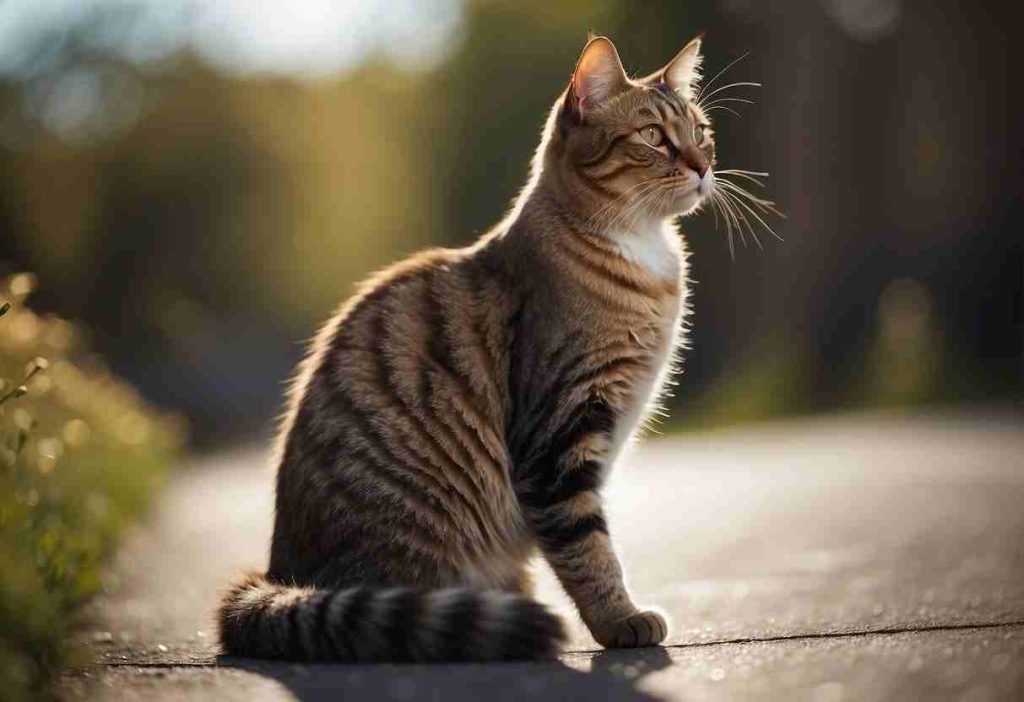
Tail length and flexibility can vary widely among different cat breeds. For instance, your average American Shorthair might have a typical tail length that plays a vital role in common behaviors and communication.
While a typical Siamese may flaunt a longer and more whip-like tail. Certain breeds, like the Manx, create quite a buzz due to their very short or nonexistent tails, which owe their unique look to genetics.
No matter the length or flexibility, each tail is filled with tales of emotions and communication, helping these agile creatures express themselves and maintain their legendary balance.
Key Takeaways
- Cat tails contain bones called caudal vertebrae, which aid in balance and mobility.
- The number of bones and flexibility in tails vary among different cat breeds.
- A cat’s tail is a tool for communication and expressing emotions.
In-Depth Look at the Cat Tail Bones

The tail of your feline friend isn’t just for show; it’s a nifty appendage that plays a crucial role in balance, communication, and mobility.
What’s Inside? At the core of your cat’s tail are several tiny bones called caudal vertebrae. On average, your cat’s tail consists of about 18 to 23 of these bones. (1)
Each bone in their tail is a specialized part of their vertebral column.
Function and Flexibility
- These bones provide an excellent range of motion.
- They allow your cat to make those iconic tightrope walkers move along fences and narrow ledges.
- The tail helps them correct their position during a fall (the famed “righting reflex”).
Here’s what sets them apart: while other animals also have caudal vertebrae, cats are unique in just how flexible and expressive their tails are.
You’ve probably seen your cat’s tail puff up when startled or whip back and forth when they’re concentrating on catching that elusive red laser dot.
A Tail Comparison
- Dogs: Their tails also have caudal vertebrae, but they don’t quite match the cat’s tail in terms of agility and expression.
- Monkeys: They might use their tails for balance too, but not all have the prehensile capabilities found in some species.
Remember, a cat’s tail is sensitive, so always handle it with care to avoid any injury.
Next time you see your cat’s tail in action, you’ll appreciate the intricate dance of bones that makes your furry pal’s acrobatics possible. Isn’t it pawsome to learn about how their bodies work?
Health and Care of Cat Tails

They have 19 to 21 bones known as caudal vertebrae, but alas, they’re not indestructible. Tail injuries are no fun, and they can happen—a door jam here, a misjudged leap there.
It’s not just the mishaps; squabbles with neighborhood felines can also leave a tail worse for wear.
Injuries you should keep an eye out for include:
- Fractures: A break in any of those tiny bones. (2)
- Nerve Damage: This affects not just tail movement but can impact other functions. (3)
So, what if Whiskers comes home with a wonky tail one day?
Veterinary Care:
- Visit the vet—fractures might need a splint, and serious ones could call for surgery.
- For nerve damage, your vet might recommend medication or physical therapy.
Home Care Tips:
- Keep your cat’s environment safe and tail-friendly (No slamming doors!).
- Offer a cozy recovery spot, and limit their daredevil antics while they heal.
Remember, your furball’s tail is more than a cute appendage—it’s a vital part of their balancing act and communication toolkit. A friendly tip, be gentle with that tail; it’s not a handle!
Your cat trusts you with their nine lives, including tail care. No pressure, but with a dose of attention and some purr-worthy TLC, you’ll be on your way to safeguarding one of their most expressive assets.
Behavioral and Communication Aspects
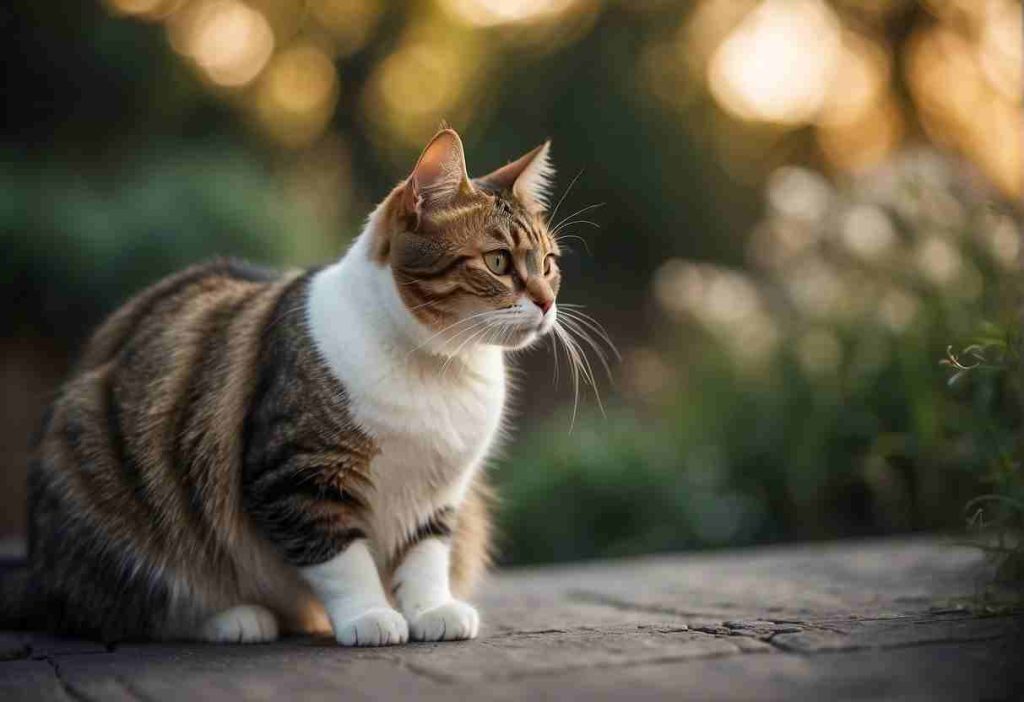
Have you ever wondered what your furry friend is trying to tell you with their tail?
Cats express a myriad of feelings through their tails, and understanding this “tail language” can deepen your bond with your kitty.
When a cat holds its tail high, it’s generally a sign of confidence and happiness. Picture a cheerful greeting when you walk through the door – that’s your cat waving their tail high like a little flag of joy.
On the flip side, have you ever seen a cat with a puffed-up tail? It’s almost like they’re trying to say, “Back off!”
This is typically a response to fear or agitation, a natural mechanism intended to make them look bigger and more daunting to a potential threat.
Here’s a quick cat tail mood guide:
- Tail Up: “I’m feeling great!” (4)
- Slow Tail Wag: “I’m evaluating the situation…”
- Tail Flicking Back and Forth: “I’m irritated or excited!”
- Puffed Tail: “I’m scared or feeling threatened!”
- Tucked Tail: “I’m not feeling very secure.”
When it comes to interacting with your cat’s tail, it’s like handling a piece of fine art – with utmost care. Always remember that their tail is an extension of their spine, and being too rough can hurt them.
Gentle strokes are usually welcome, but keep an eye on their body language. A swift twitch or a whip-like movement tells you it’s time to stop.
Remember:
- Gentle Handling: Treat their tail with care to avoid injury.
- Respect the Signals: Your cat’s body language is an open book—if you know how to read it.
Tail talk isn’t just whimsical feline behavior; it’s a key part of how they communicate with you and the world.
So, the next time you observe your cat’s tail, notice what they might be saying – it’s quite the conversation starter!
Do Cat Tails Have Bones: Visual and Interactive Learning Resources
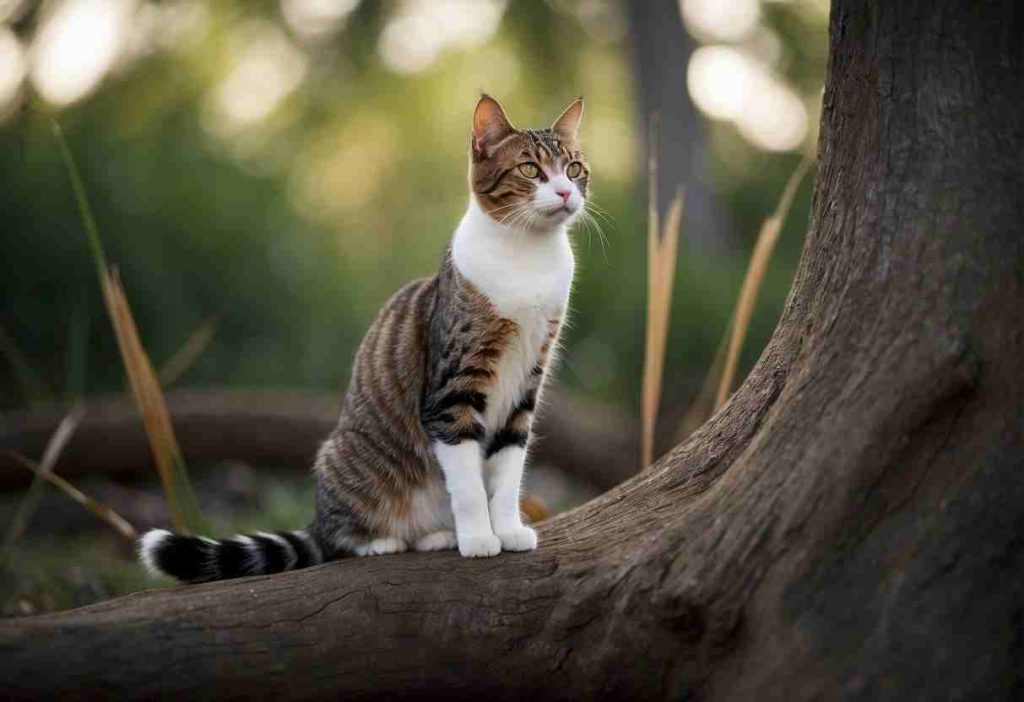
Online 3D Models & Animations
- Check out animated videos to see how the cat’s tail moves in real time. It’s like being in a virtual cat world!
- Use 3D models available on veterinary educational sites to explore each tailbone from different angles.
Infographics
- Discover infographics that break down the tail structure into easily digestible chunks. They’re like bite-sized treats for your brain!
- Find images showing the 20 caudal vertebrae that make up the tail, illustrating how they decrease in size from base to tip.
Educational Websites & Apps
- Visit sites like AnatomyLearner for comprehensive diagrams and friendly explanations.
- Download interactive anatomy apps specifically designed for pet lovers and vet students.
List of Tail-Related Anatomy Topics:
- Caudal vertebrae count and variability
- Muscles, nerves, and blood vessels relation
- Tail flexibility and mobility understanding
- Impact of genetic mutations (e.g., Manx breed)
Facts & Stats:
- Tail Length: Varies from cat to cat, up to 20 bones.
- Flexibility: Each vertebrae joint contributes to the tail’s agility.
Remember, while exploring, if you come across technical terms, there’s always a friendly explanation just a click away. Your cat’s tail isn’t just for show – it’s a complex marvel of nature worth wagging about!
Cultural and Mythological Perspectives
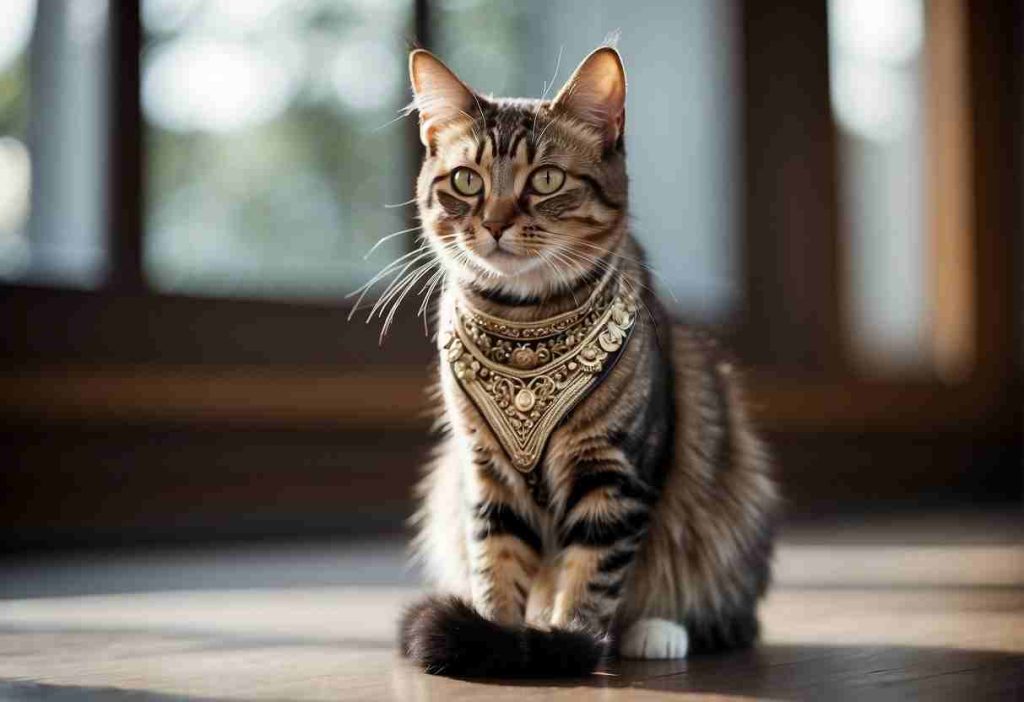
They’re wrapped in fascinating beliefs and tales! Take Japan, for instance, where long-tailed cats are often seen as bearers of good fortune.
It’s a charming notion—imagine your furry friend doubling as a lucky charm!
But hold on, have you heard people say cats are acrobats just because of their tails? Let’s clear that up!
While it’s true that cats use their tails for balance, saying that their poise depends on their tails alone is just another myth.
According to scientific studies, balance is a complex act, and while the tail plays a role, it’s not the sole hero of this balancing act.
Here’s a quick list of tail-related beliefs that might tickle your fancy:
- In ancient Egypt, cats, including their tails, were held in high esteem and often associated with gods and goddesses.
- Some European myths claim that a cat flicking its tail is predicting stormy weather.
Cultural myths:
| Culture | Belief |
|---|---|
| Japanese | Long-tailed cats are a symbol of good luck. |
| European | A twitching cat tail predicts rain. |
Still, it’s crucial to remember that while these stories and beliefs add a touch of magic to our understanding of cats, they are just that—stories.
Your cat’s tail is indeed a marvel of nature, with a practical purpose that science helps us appreciate. Keep loving and learning about your cat, tail, and all, because there’s always more to discover!
Addressing a Broader Audience

It’s a common question: do cat tails have bones?
For Educators: Imagine you’re balancing on a tightrope, and you’ve got that feathered fan in your hands to help keep your balance.
That’s your cat’s tail! It’s not just for show, it’s a pivotal part of their balance. It’s composed of multiple small bones, called vertebrae, about 18-23 to be precise, depending on the breed.
- Classroom activity: Use a model of a cat skeleton to point out the vertebrae!
For Vet Students: Diving deeper, each vertebra is a crucial part of the tail’s flexible structure, supporting complex movements and communications.
Those vertebrae make up roughly 10% of the total bone count in your cat’s body.
- Study Tip: Get up close with a cat skeleton or X-ray to see how the tail vertebrae get smaller toward the tip.
FAQ For Both:
- How do cats use their tails for balance?
- Cats utilize their tails to adjust their balance, especially during quick movements or to ensure a perfect landing during those epic counter leaps.
- What if a cat’s tail is injured?
- The tail is sensitive and packed with nerves. Injury can affect a cat’s balance, so it needs immediate veterinary attention.
Remember, every kitty’s tail tells a tale of balance, communication, and anatomy! Keep your learning as agile as their tails, and you’re sure to stay engaged with this fascinating aspect of feline biology.
Quick Recap
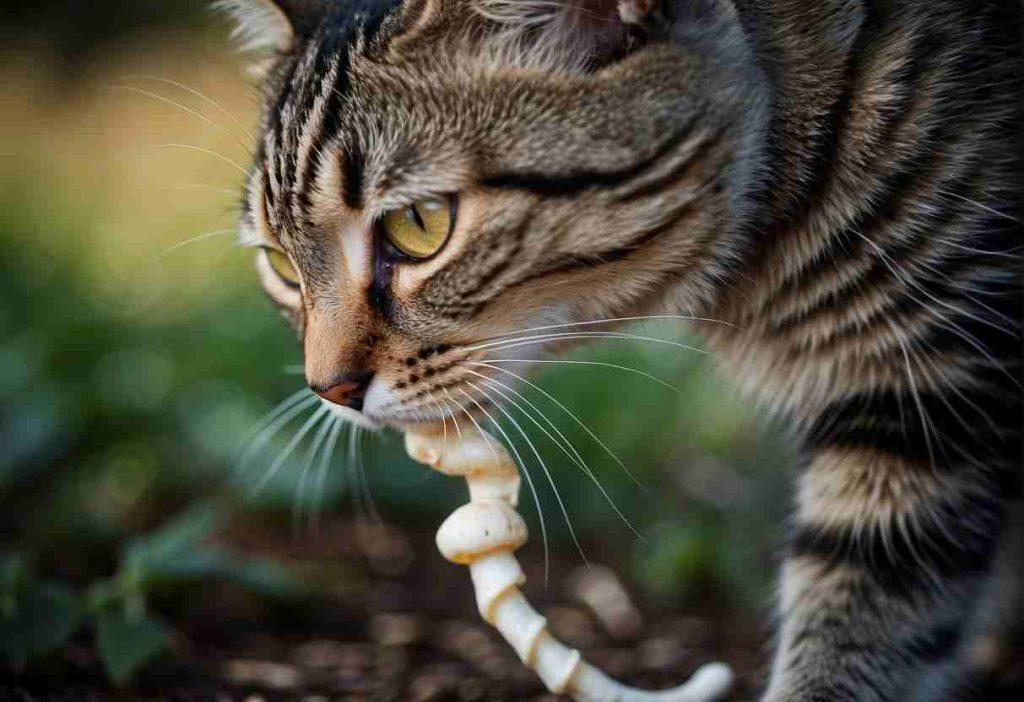
Tail Structure: Cats’ tails are fascinating extensions of their spinal column, consisting of small bones known as vertebrae. These can range between 19 to 25 in number. (5)
Just like a Russian nesting doll, each bone gets progressively smaller towards the tail’s tip.
- Why It Matters: For one, understanding the tail’s anatomy is crucial. A tail injury can be a serious affair, potentially leading to nerve damage. It’s integral for cat owners like you to be gentle with these sensitive appendages.
- Communication Tool: Those tail twitches and flips aren’t just adorable – they’re part of how your cat speaks! It’s a nuanced language of contentment, irritation, and everything in between.
- Variations Exist: Not all cats are born equal in the tail department. For instance, Manx cats strut a genetic mutation resulting in little to no tail – a quirky twist of nature.
Alright, don’t let the learning stop here! Diving into reputable sources such as veterinary websites or picking up a book on cat behavior will make you a pro in no time.
Got it? Now, go ahead and be the best pet parent by lending a keen eye to your cat’s tail language – after all, they’re trying to tell you something!
Frequently Asked Questions
Navigating the world of cat tails can be quite intriguing! Let’s jump straight into some of the hot topics that cat owners like you often wonder about.
Can a broken cat’s tail heal on its own?
A broken cat tail may heal over time, but it largely depends on the injury’s severity.
Minor fractures can mend themselves if the tail is kept still, but major ones will require veterinary attention.
How can I tell if my cat’s tail is in pain?
If your cat’s tail is in pain, they might show signs like not wanting it to be touched, holding it oddly, or reduced movement.
These are cues that your kitty could use some help.
Do tail injuries affect a cat’s balance?
Indeed, tail injuries can affect balance since the tail is key to a cat’s agility. Your furry friend might take a few missteps or be less acrobatic if their tail isn’t up to snuff.
Is it normal for a cat’s tail to twitch occasionally?
A little twitching is typical for cats and is often just a way to communicate or indicate a focus on something.
However, constant twitching without stimuli could be worth a checkup.
How does tail amputation affect a cat’s life?
Tail amputation may seem drastic, but many cats adjust well. You might notice some initial imbalance, but they generally recover their poise with time.
What are the common causes of tail infections in cats?
Tail infections in cats can stem from wounds, bites, or even fleas. Keep an eye on any scratches or swelling because these little signs can indicate bigger issues.
Can environmental factors affect a cat’s tail health?
Yes, environmental factors like extreme temperatures or rough surfaces can impact the skin and fur of your cat’s tail. Cozy beds and safe play spaces can prevent these issues.


